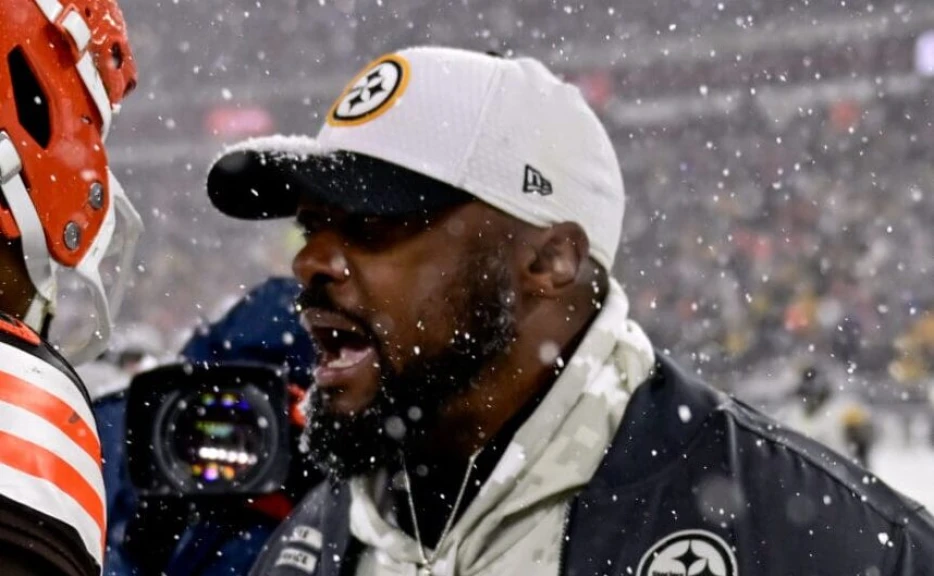
The post Dids Refs Get Call Right on Crucial Steelers-Browns Play? appeared first on Steelers Now.
CLEVELAND — The Thursday Night Football game between the Pittsburgh Steelers and Cleveland Browns hinged on a critical call in the fourth quarter, when Browns quarterback Jameis Winston threw up a wobbly pass that ended up hitting his own offensive line.
Two officials dropped flags on the play, and chaos ensued, as the Steelers seemed unsure as to what the call on the field was, before ultimately burning a timeout on defense.
The officiating crew ended up calling illegal touching on Browns center Ethan Pocic, a five-yard penalty. After much debate, Steelers head coach Mike Tomlin decided to take the penalty, choosing a 3rd and 7 at the 30 over a 4th and 2 at the 25. The Browns converted the third down — their first of the night — and went on to win the game.
But did the officials get the call right?
The call of illegal touching was properly meted out. Pocic was an ineligible receiver and was the first to touch the forward pass from Winston, as though Winston was hit by Patrick Queen as he released the pass, Queen did not touch the ball.
#PITvsCLE jameis winston's illegal touch pass play that was initially ruled intentional grounding. it apppears he was trying to throw it deep to the two receivers in the middle of the field. luckily for him, he couldn't get it off, because otherwise may have been INT pic.twitter.com/i4hHOhDTWT
— Lamar owns Herbert (@619lexus) November 22, 2024
What about intentional grounding? That penalty would have been a spot foul all the way back to about the 38-yard line, and been a loss of down, setting up Cleveland for a 4th and 15. Cleveland would have been faced with the choice of that or a 55-yard field goal in the snow, and even if they’d have made it, the Steelers would have had plenty of time left, two timeouts, and only needed a field goal to win the game.
Unfortunately for the Steelers, it’s easy to make the case that Winston’s pass was not intentional grounding, for not one, but two reasons. Let’s start with the definition of intentional grounding, per the NFL rulebook.
“It is a foul for intentional grounding if a passer, facing an imminent loss of yardage because of pressure from the defense, throws a forward pass without a realistic chance of completion. A realistic chance of completion is defined as a pass that is thrown in the direction of and lands in the vicinity of an originally eligible offensive receiver.”
Cleveland offensive lineman Michael Dunn had checked into the game as a sixth lineman, and an eligible receiver before the snap. The Cleveland line shifted to its left as the play developed, and one of then players between Dunn and Pocic was driven backward. They were standing about three feet from one another when the ball was released. The ball clearly...